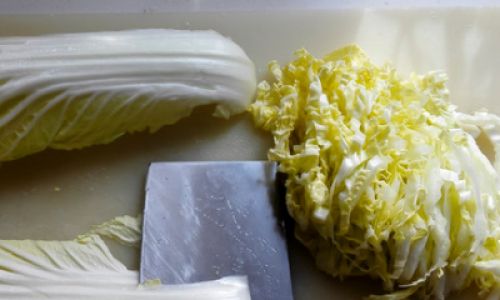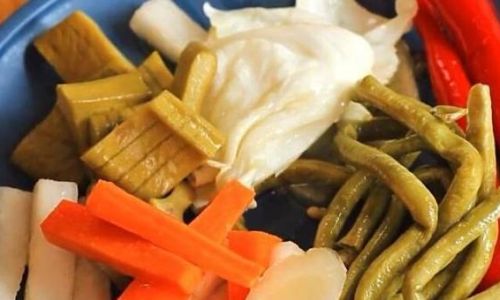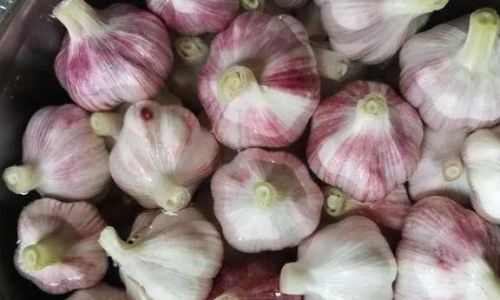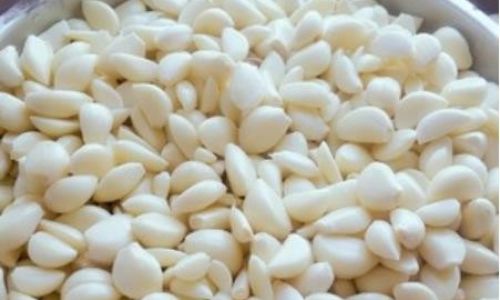Introduction
Pickling sauerkraut, a traditional fermented vegetable dish originating from Central and Eastern Europe, has become a culinary staple worldwide due to its unique tangy flavor, rich nutritional profile, and probiotic benefits. This fermented cabbage dish is not only delicious but also boasts a myriad of health advantages, including improved digestion, enhanced immune function, and potential cancer-preventive properties. However, the process of making sauerkraut can be intimidating for those unfamiliar with fermentation techniques. This comprehensive guide aims to demystify the art of pickling sauerkraut, providing step-by-step instructions, troubleshooting tips, and valuable insights into the science behind this ancient preservation method.
Understanding the Basics of Fermentation
Before diving into the specifics of pickling sauerkraut, it’s crucial to grasp the fundamentals of fermentation. Fermentation is a biochemical process that involves the conversion of carbohydrates into alcohols or acids by microorganisms, primarily yeasts, bacteria, or a combination of both. In the context of sauerkraut production, lactic acid bacteria (LAB) play a pivotal role. These beneficial bacteria consume the sugars in cabbage and produce lactic acid, which not only preserves the vegetable but also gives sauerkraut its characteristic tangy taste and sour aroma.

Choosing the Right Ingredients
The quality of your sauerkraut begins with the ingredients. Here’s what you’ll need:
-
Fresh Cabbage: Opt for firm, crisp heads of cabbage with tight, compact leaves. Red, green, or a mix of both can be used, depending on your preference for color and flavor.
-
Salt: Use non-iodized, coarse sea salt or kosher salt. Iodized salt can inhibit fermentation due to its additives. The salt concentration should be around 2% of the cabbage weight for optimal fermentation.
-
Optional Ingredients: For added flavor and texture, consider incorporating carrots, beets, apples, or herbs like dill, caraway seeds, or juniper berries.
-
Fermentation Vessel: A large, non-reactive crock, glass jar, or food-grade plastic container with a tight-fitting lid is essential. Avoid metal containers as they can react with the acidic environment.
-
Weights and Cloths: A fermentation weight (such as a smaller jar filled with water) or a clean, heavy stone to keep the cabbage submerged, and a clean cloth or loose-fitting lid to allow gas exchange while preventing contaminants from entering.
Preparing the Cabbage
-
Cleaning: Remove any outer leaves that are damaged or discolored. Rinse the cabbage head under cold running water and pat it dry with a clean towel.
-
Shredding: Using a sharp knife or a food processor with a shredding blade, cut the cabbage into thin strips. The thinner the shreds, the faster the fermentation process.
-
Salting: Place the shredded cabbage in a large bowl and sprinkle with salt. Use your hands to massage the salt into the cabbage, squeezing and kneading until the cabbage begins to release its juices. This process, known as “wilting,” is crucial for creating the brine necessary for fermentation.
Packing the Jar
-
Layering: Transfer the wilted cabbage to your fermentation vessel, packing it down tightly with each layer to ensure there are no air pockets. This helps exclude oxygen, which can interfere with fermentation.
-
Adding Optional Ingredients: If using, distribute any additional vegetables or herbs evenly throughout the cabbage layers.
-
Brine Check: Once all the cabbage is packed, check the level of the liquid. It should cover the cabbage by at least 1-2 inches. If not, you can make a brine solution by dissolving additional salt (about 1-2 tablespoons per quart of water) and pouring it over the cabbage until fully submerged.
-
Weighting and Covering: Place a fermentation weight on top of the cabbage to keep it submerged. Cover the jar with a clean cloth or a loose-fitting lid to allow gases to escape while preventing contaminants from entering.

Fermentation Process
-
Temperature: The ideal fermentation temperature is between 68-75°F (20-24°C). Too cold will slow down fermentation, while too hot can kill the beneficial bacteria or lead to unwanted bacteria growth.
-
Burping: During the first few days, you may need to “burp” your jar daily to release built-up gases. Simply unscrew the lid slightly, let out the gas, and then reseal tightly.
-
Monitoring: Keep an eye on the brine level and cabbage appearance. The cabbage should sink and become more translucent as fermentation progresses. A white, scummy layer (kahm yeast) on the surface is common and can be skimmed off with a clean spoon. It’s not harmful but can affect taste if allowed to proliferate.
-
Taste Testing: After about 5-10 days, start tasting your sauerkraut to determine when it reaches your desired level of tanginess. The longer it ferments, the sourer it will become.
Storing Your Sauerkraut
-
Refrigeration: Once fermentation is complete, transfer the sauerkraut to clean, airtight containers and store in the refrigerator. This slows down further fermentation and preserves the texture and flavor.
-
Long-Term Storage: For longer-term storage, you can can or vacuum-seal your sauerkraut. Ensure it’s fully cooled before packing and follow proper canning procedures to avoid botulism risk.
Troubleshooting Common Issues
-
Mold: If you notice black, green, or blue mold, discard the batch immediately. This indicates contamination from unwanted bacteria or fungi.
-
Soft or Mushy Cabbage: This can happen if too much salt is used or if the cabbage wasn’t packed tightly enough, allowing oxygen to reach the cabbage.
-
Too Sour or Not Sour Enough: Adjust fermentation time based on taste preferences. Remember, the longer it ferments, the more sour it will become.
Conclusion
Pickling sauerkraut is a rewarding culinary endeavor that not only provides a delicious and nutritious food but also connects you to a centuries-old tradition of food preservation. By following this comprehensive guide, you’ll be able to master the art of fermentation, creating batches of tangy, probiotic-rich sauerkraut that can be enjoyed on their own, used as a topping for burgers or hot dogs, or incorporated into a variety of dishes. Remember, patience and attention to detail are key to successful fermentation. Happy pickling!






0 comments